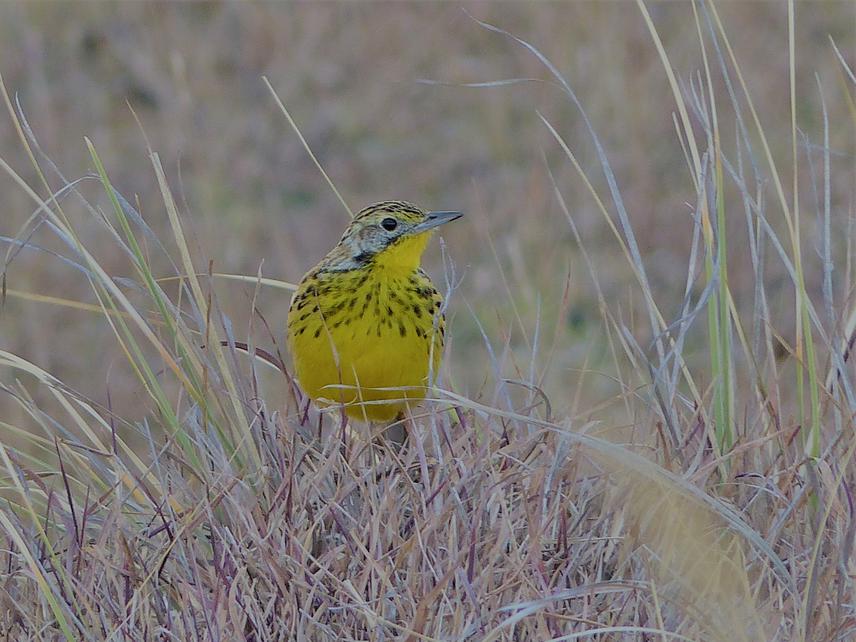Samuel Nganga Bakari
The proposed project aims to contribute towards building ecological and socio-economic knowledge that will be used to enhance the conservation of highland grassland biodiversity and as a case study for grassland sustainability. In addition, implementation of the project will meet a secondary objective of helping initiate a long term management tool for two nature reserves, a challenge that the local conservation group, Friends of Kinangop Plateau has been trying to address for the last ten (10) years without success due to lack of funds.

Sharpe's Longclaw. ©Andy Panhorst.
Grasslands form a primary base for livestock husbandry and environmental conservation, are irreplaceable for the economy, ecology and social development of the world over. Tropical highland grasslands play a key role in energy cycling, store approximately 15% of the global carbon and account for an estimated 30% of global total net primary productivity. In Kenya, the grasslands are important for agriculture and livestock husbandry. They are also home for unique biodiversity, and contribute to energy and nutrient cycling, and primary production. The unique highland grasslands of Kinangop, despite being an Important Bird Area (IBA), are not included in any protected areas, and are rapidly vanishing. The remaining grasslands are now mainly modified patches of grazing land and cultivated plots, thus the ecological character of the plateau is changing remarkably fast. These grasslands face many challenges, revolving around excessive utilization and inappropriate management, resulting in degradation of grassland ecosystems. Parallel to the decline of grassland habitats, are declines of biodiversity and birds’ populations that are disproportionately large. The remaining patches are highly fragmented and their qualities are usually unpredictable and inconsistent as a result of grazing and weather conditions.
As the only home for specialized birds, they must align their annual cycles to these inconsistent changes and make decisions on when and where to forage, breed and molt. We aim to understand factors influencing the decisions (when to breed, molt, where to forage) by the grassland birds and the linkage with grassland conditions. The information will be very useful conservation tools for the rare and endemic birds of Kinangop as well as improve avi-tourism as a source of income for the local community.
To better understand these factors, we shall set up grazing experiments on two nature reserves in Kinangop. The proposed project will contribute towards building ecological and socio-economic knowledge that will be used to enhance the conservation of highland grassland biodiversity and as a case study for grassland sustainability. In addition, implementation of the project will meet a secondary objective of helping initiate a long term management tool for the nature reserves, a challenge that the local conservation group, Friends of Kinangop Plateau has been trying to address for the last ten (10) years without success due to lack of funds.